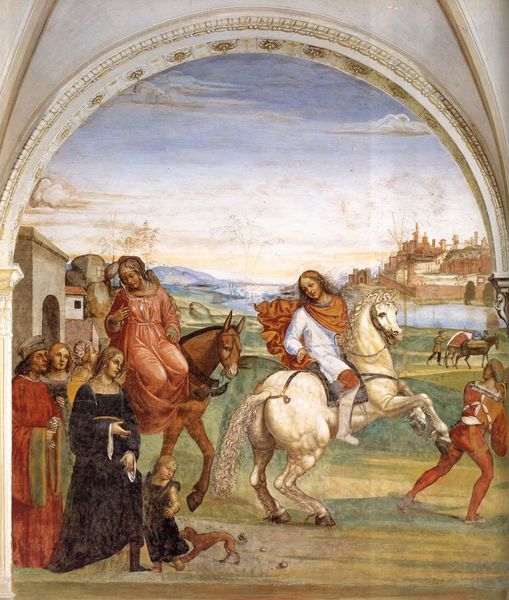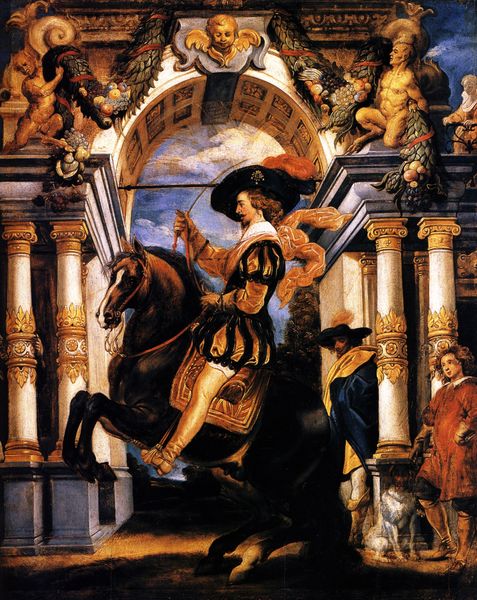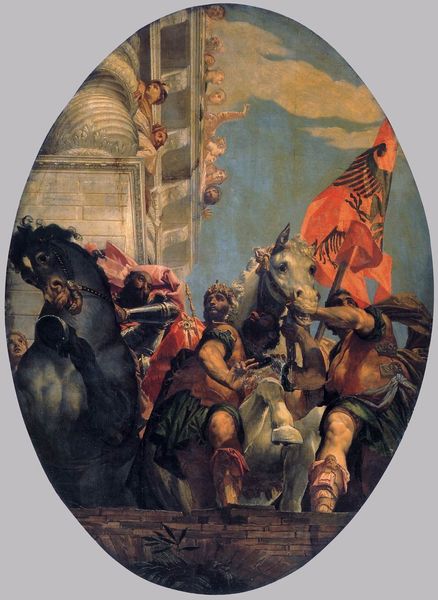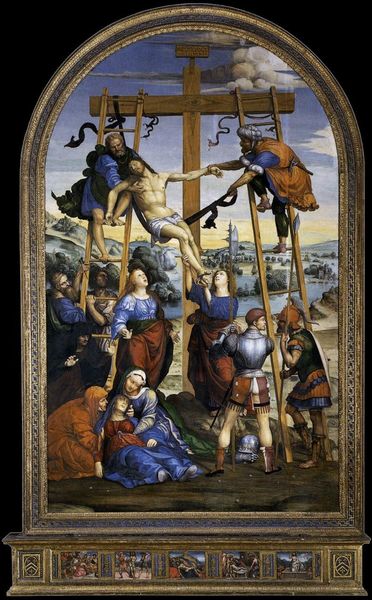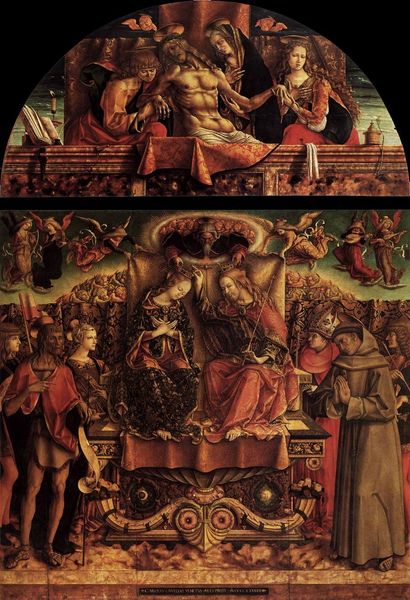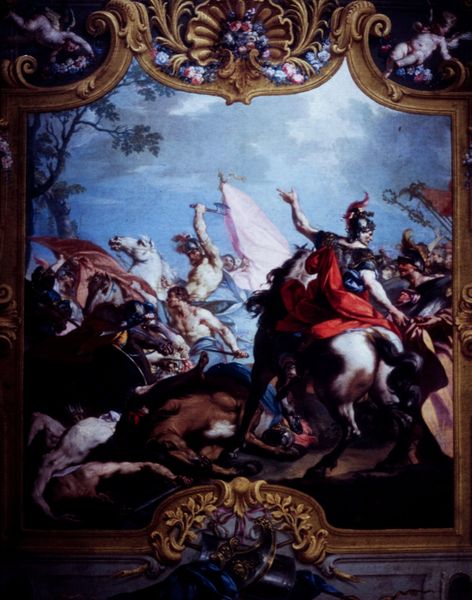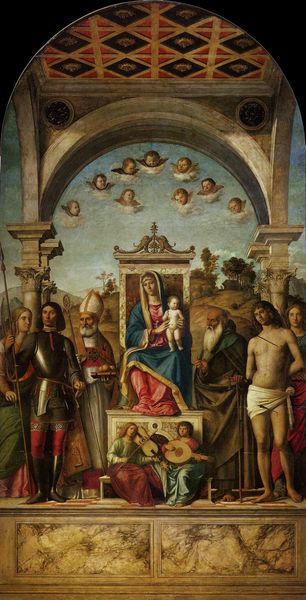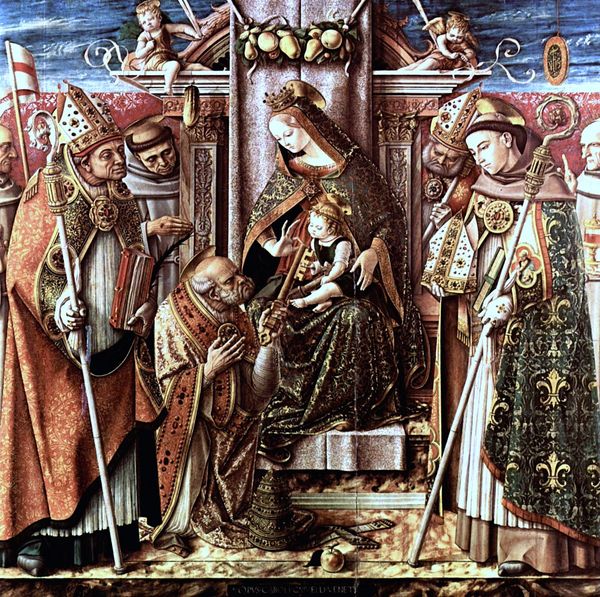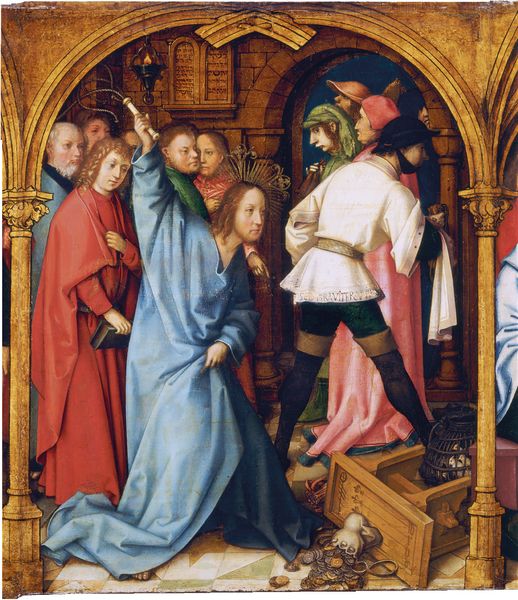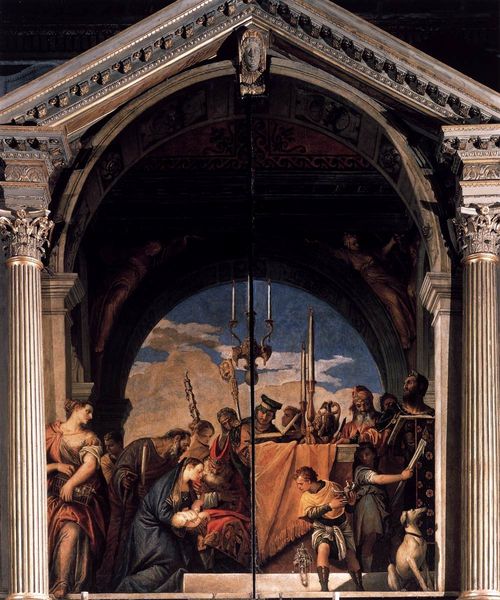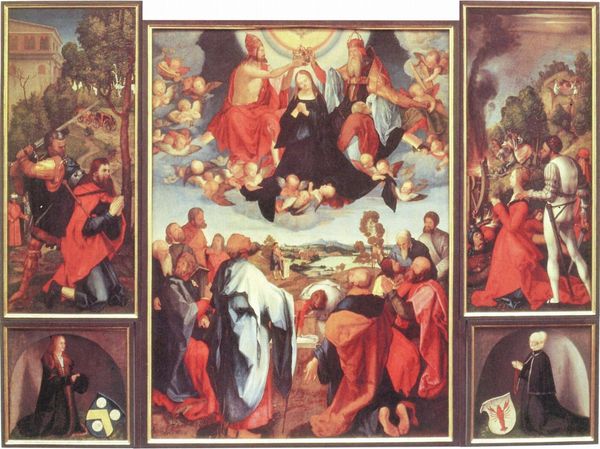
painting, oil-paint
#
portrait
#
allegory
#
painting
#
oil-paint
#
oil painting
#
child
#
group-portraits
#
horse
#
christianity
#
men
#
mythology
#
history-painting
#
italian-renaissance
#
christ
Dimensions: 445 x 214 cm
Copyright: Public domain
Editor: We are looking at "The Glory of St. Vidal" by Vittore Carpaccio, painted in 1514 with oil paint. There is a figure on horseback but the balconies and figures above give a strange vibe to this oil painting. How do you interpret this work, focusing on its creation and historical context? Curator: For me, this painting is particularly interesting when we consider its materiality. The oil paint itself—pigments ground, mixed with oil, and painstakingly applied—speaks to the artisanal labor of the Renaissance workshop. Look closely. Do you notice anything peculiar in the layering? Editor: Well, it looks like multiple scenes layered on top of each other. Is that connected to the materials? Curator: Precisely. Carpaccio is not just depicting a saint; he is showing us a carefully constructed image. The means of production here involve complex social dynamics: patron, workshop, materials sourced locally or traded across distances. This piece highlights the social labor involved, blurring the line between craft and ‘high art’ championed by later critics. The use of perspective is also interesting when we think about audience. How might the original display context – and its viewers – inform your perspective? Editor: I see, so considering its context makes it more than just a religious scene. It reflects the social and economic realities of artistic creation back then. I've learned so much. Curator: And I think your engagement points towards new avenues to keep considering these paintings! It shows us the artist negotiating those social and material conditions of making images.
Comments
No comments
Be the first to comment and join the conversation on the ultimate creative platform.
